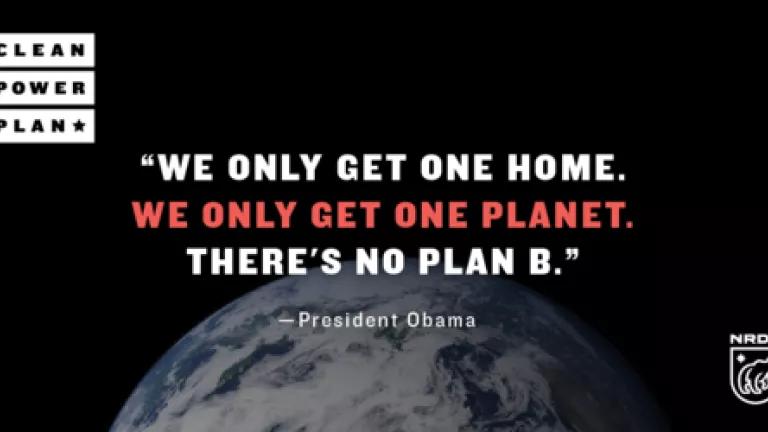
America is taking historic action against climate change. On Monday, President Obama announced the first-ever national limits on carbon pollution from power plants. This breakthrough will help shield future generations from climate chaos and prevent thousands of premature deaths each year. It is also a major opportunity for us to shift away from fossil fuels--including natural gas--by expanding clean, renewable power.
This is welcome news for people living on the frontlines of reckless fracking for natural gas.
Natural gas companies have a track record of running roughshod over communities. Frack pads are often sunk in people's backyards and neighborhoods and have been linked to increased air pollution and contaminated drinking water. When the Environmental Protection Agency first proposed carbon limits a year ago, some groups feared the agency's plan would promote natural gas as a "bridge" fuel between coal and renewable energy.
Instead the EPA's final Clean Power Plan puts energy efficiency and renewable energy front and center as the path to meeting the targets for carbon pollution reductions. That means that as we all work together to have clean energy replace the need for coal and natural gas, more communities can be shielded from the threats of fracking and more communities can reap the benefits of clean energy.
Here's how the EPA plan accelerates the move away from gas and coal.
The EPA has set carbon reduction targets for each state and grants them a lot of flexibility in how to achieve the reductions. These targets will expand the market for low-carbon resources like energy efficiency, wind and solar, while carbon-heavy fossil fuel generation, including natural gas, will have to absorb at least some of the costs of their pollution--costs they have foisted on us for the past century. In addition, the agency offers states early incentives for clean energy, including building more wind and solar power and broadening energy efficiency programs with an extra incentive to help low-income communities put money-saving energy efficiency in place.
The Clean Power Plan provides no similar incentives for natural gas generation.
The agency has projected how the carbon pollution limits will change the nation's energy mix. By 2030, it forecasts that coal generation will be about 23 percent lower than it would be without the rule. Some states will replace part of that energy with natural gas, but the EPA standards provide for them to do so only by increasing performance of existing plants, not by building new plants. As a result, the agency projects new gas power plant construction will drop by between 39 percent to 68 percent from where it might have been without the rule. Because the EPA projects that existing natural gas plants will continue to run, however, the agency estimates only a 1 to 4.5 percent drop in gas use for power by 2030.
Yet the EPA's projections are based on conservative estimates about how much low-cost efficiency and renewable energy the market will deliver. This means that EPA's modeling likely overstates the amount of natural gas use compared to what will happen in the real world.
The Clean Power Plan is designed to give a measurable leg up to efficiency and renewables. The market is theirs to dominate, and EPA projects that renewable electricity could roughly double between today and 2030. NRDC's analysis shows even greater potential for these cleaner resources. Taking advantage of this potential will even further reduce reliance on natural gas.
The natural gas industry used to claim that new gas plants could be the so-called bridge between coal-fired plants and renewable power. The EPA plan rejects the notion that one carbon-intensive fuel can be a sustainable replacement for another. And the unhappy reaction of the natural gas industry backs that up. When the EPA's final plan was released, the president of the industry-backed American Energy Alliance Tom Pyle said: "The bridge was just blown up."
The Clean Power Plan helps level the playing field for energy efficiency and renewable energy. Now it's up to all of us to push states to move beyond fossil fuels. Citizens have a role to play as states design their plans for hitting carbon reduction targets. We can tell our governors, state legislators and other leaders that we want more clean energy in our communities. This message is especially important to deliver in states where natural gas is a contender for replacing coal in our power plants.
As we work together in the coming years, we will see more wind farms along the horizon, more energy-saving appliances installed in low-income neighborhoods, more solar panels lining office roofs. Over time, this will lower demand for the frack pads and gas plants that threaten the health and well-being of too many American communities. With our help, the EPA plan for reducing carbon pollution will accelerate this shift. Click here to show your support.

